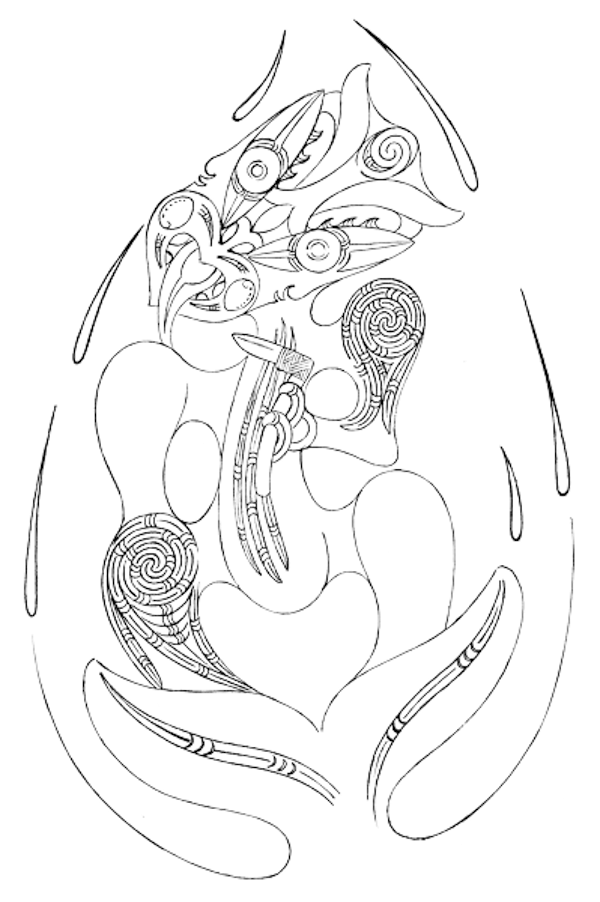
Associated with sea and fish with qualities of rhythmic, tidal surging, calm.
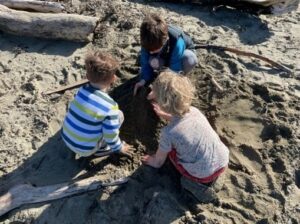
Experiencing the local landscape.
Worser Bay School – has a rich history, as the Whetūkairangi Pā site, as the first school on the Miramar Peninsula, and being surrounded by much natural beauty – beach and bush. The whole school recently held an incredible celebration of their Atua inquiry learning. The resulting art show began with a Wearable Art parade, then whānau explored the classroom displays and ākonga shared their ideas and aspirations for the future of their Living Landscape.
A whole school approach is the Worser Bay School way. A staff hui around the Enviroschools Living Landscapes theme area resource empowered teachers to undertake mapping of the local landscape with their class. Following the Enviroschools activity “Mapping your landscape instructions”, senior students worked in small groups to draw spaces around the school they felt were important, combining their knowledge. These Living Landscape Maps then became the baseline for a session “Experiencing Atua in our living landscapes”.
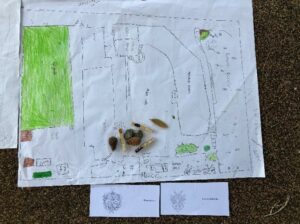
Mapping the landscape around the school.
The session was opened with the school karakia, waiata and whanaungatanga – students introduced themselves and talked about a natural place they loved spending time in. Students enthusiastically shared a passion for bush walks, river swims, rock and shell collecting, gazing at beautiful mountain ranges and exploring the ocean floor! Each child’s face lit up as they spoke about the way they felt calm or peace-filled once they were playing under a tree or how they appreciated hearing the sound of the ocean or seeing the expanse of the mountain range overlooking the harbour.
Students were given cards depicting Atua they might notice in and around their kura, for example Hurumanu (seabirds), Hineone (sand) and Hinepūkohurangi (mist).
Students listened to an excerpt from the foreshore and seabed submission (Enviroschools Living Landscapes resource – Tuia i runga, tuia i raro pg.41) and they responded energetically when the Atua card they had been given was mentioned in the story.
“When I step onto the beach I feel the presence of Tāwhirimātea in the gentle breezes and buffeting winds, of Hineuamairangi in the soft caress of light showers, of Te Ihorangi in the full, unadulterated, cleansing power of driving rain, of Hinepūkohurangi in the protective embrace of the mist, of Tamanuiterā in the warmth of the sun, of Hine te marama in the illumination of the moonlight, of Urutengangana in the conversations and energy plays of the stars, and of Hurumanu in many voices of the seabirds” – paragraph taken from Living Landscapes Theme Area, an excerpt originally from a submission by Sean Ellison to the Foreshore and Seabed Bill.
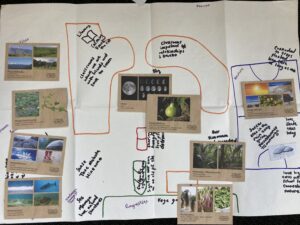
Using the Atua resources to help explore and make sense of the local landscapes.
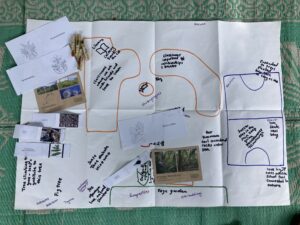
Mapping with layers of observation and knowledge.
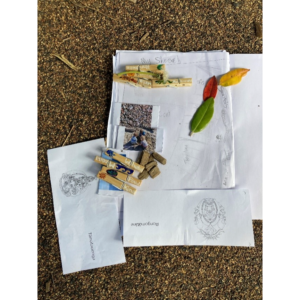
Adding layers to the Living Landscape Map.
Students then went on a hīkoi to explore their school environment and observe the presence of Atua around the school before returning to share their discoveries and feelings. Some students gathered dry leaves, twigs or objects found during their observations and were invited to place these on their map when they shared back with the whole group.
Given the school’s rich history, as Whetūkairangi Pā site, as the first school on the Miramar Peninsula, and surrounded by much natural beauty – beach and bush, it was important for students to celebrate this and see themselves as part of this landscape. Focusing on Atua helped students observe different aspect of their place. This knowledge and awareness was transferred into creative art displays that followed the themes of land, sea and sky. This also helped ākonga think about the way they interacted with the local landscape and what their aspirations were for the future of Whetūkairangi.
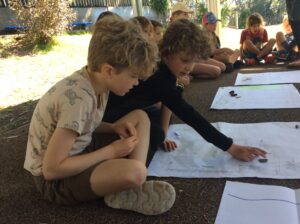
Sharing observations.

Considering different elements.
Banner photo: Some of the resulting artwork.